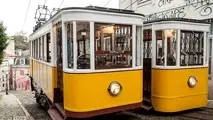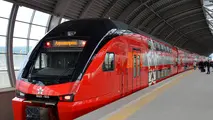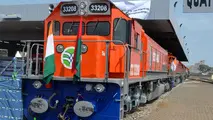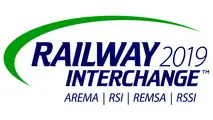BNSF, Wabtec Advancing the Future of Motive Power
In a wide-ranging interview with Railway Age in December 2018, BNSF’s then-Executive Chairman Matt Rose had this to say about the future of locomotive propulsion technology:

In a wide-ranging interview with Railway Age in December 2018, BNSF’s then-Executive Chairman Matt Rose had this to say about the future of locomotive propulsion technology:
“We’ve got to look at alternative fuels for our locomotives. We tested LNG, and we don’t see the spread between diesel and natural gas wide enough to justify us making that investment, and it’s a significant investment. For us, it’s probably $8 billion to $10 billion. We don’t see the returns of doing that. So we’ll open the next chapter of our book—battery operated locomotives. And we’re looking at different tender configurations, and working with suppliers on who we think could provide us with some unique battery technology development … [B]attery-powered locomotives … create a lot of electricity going down the track. That energy all dissipates. We haven’t figured out how to capture that electricity. That’s what we’re spending a lot of time thinking about.”
Nine months later, Matt Rose’s vision is starting to take shape. In 2018, BNSF and Wabtec (then GE Transportation) joined forces to begin developing a 100% battery-electric, high-horsepower road locomotive prototype that works with conventional diesel-electric locomotives to make a battery-electric “hybrid consist.” Proof-of-concept and performance testing is expected to begin in late 2020.
BNSF’s prototype locomotive will use a “battery cell” similar to that of an all-electric automobile (Tesla Model S and Model 3, Nissan Leaf, etc.), though many times larger, and far more powerful. This is a lithium-ion energy storage unit with cells that contain a combination of nickel, manganese and cobalt. The prototype will have a battery with approximately 20,000 cells; future versions may have as many as 50,000 cells, BNSF notes. Before pilot testing can begin, a battery charger will need to be designed and installed at BNSF’s Mormon Yard in Stockton later this year.

While the Stockton battery charging station will provide an initial charge, the locomotive will provide regenerative power under dynamic braking to extend its range. In this application, dynamic braking will refill the battery cells’ energy reserves, “which is unlike anything today’s diesel-powered locomotives can do,” BNSF says. The battery-electric locomotives will also use an advanced, semi-autonomous version of Wabtec’s Trip Optimizer™ train energy management software (originally developed by GE) to “look at the route ahead and calculate how to best use the battery to reduce fuel consumption.” This version of Trip Optimizer™ will have, as BNSF defines it, “smart automated cruise control.”
Once all the equipment and support systems are in place, the plan is to run tests between Stockton and Barstow, Calif., about 350 miles.
“Once fully developed, the battery-electric locomotive will provide environmental benefits and fuel savings for the entire locomotive consist,” BNSF says. “While in the rail yard, the consist will shut down or idle the other locomotives (when possible) and use the battery-electric locomotive to reduce local emissions and noise. Once on the road, the locomotive consist will work behind the scenes to determine the best way to use the battery power. Thanks to this capability, the consist could also choose to ‘graze’ on battery power when the train is cruising through open landscape, saving hundreds of gallons of diesel.”
BNSF and Wabtec say that, over the next few years, they “expect to learn much about how to build, configure, operate and maintain a battery-electric locomotive. Like the transition from steam to diesel-electric locomotives, it will take years to support an all battery-electric fleet.”
Development of battery-electric locomotives up until now has been confined to low-horsepower applications for yard switching. Battery technology has evolved to the point where linehaul applications are possible. “What’s different about today’s batteries is that they are significantly more powerful than before, and manufacturers have improved battery quality, reliability and technology, so we’re able to test their power for our road locomotives,” says BNSF Senior Manager Emerging Technologies Michael Cleveland.
Battery-electric technology “certainly has the potential to be a game-changer, especially as the technology continues to mature,” says Wabtec Senior Product Manager North American Locomotives Dan McNair. “Our demonstration project in California with BNSF will give us tremendous insight into the capabilities of battery power, as well as the best and safest operational methods of leveraging the technology. Smart utilization of the batteries with diesel power can provide multiple operational benefits, and I expect the proliferation of battery locomotives will happen over the next decade.”
The BNSF/Wabtec battery-electric locomotive pilot project is being supported in part by a grant from the California Air Resources Board, which has awarded $22.6 million to BNSF and the San Joaquin Valley Air Pollution Control District for the Zero- and Near Zero-Emission Freight Facilities Project. In addition to the locomotive technology development, the Zero- and Near Zero-Emission Freight Facilities Project will pilot several emissions-reducing technologies in and around railyards. The Zero- and Near Zero-Emission Freight Facilities Project is part of California Climate Investments, a statewide initiative that puts billions of Cap-and-Trade dollars to work reducing greenhouse gas emissions, “strengthening the economy and improving public health and the environment—particularly in disadvantaged communities.”



